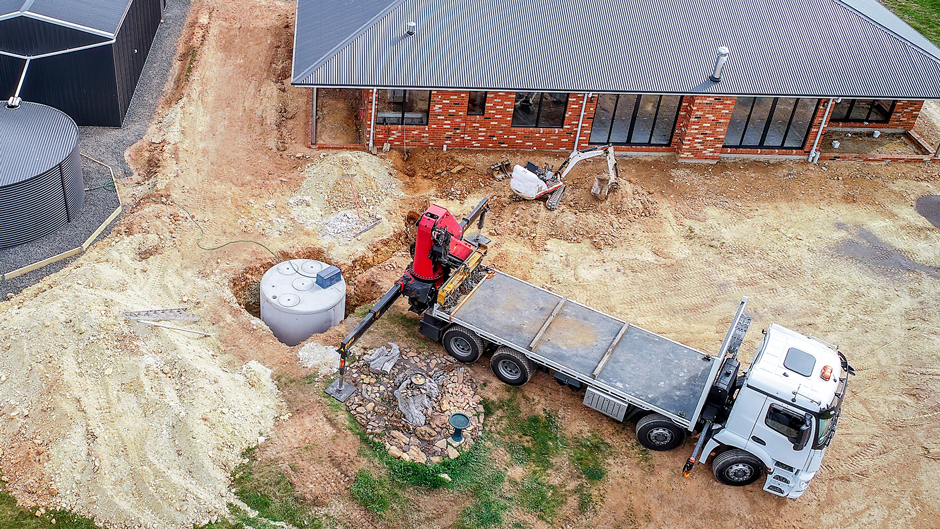For many homeowners, the term “septic system” brings to mind a single, traditional design. However, modern wastewater management has evolved to include a range of specialized systems, each designed to meet the unique needs of a property’s soil, size, and terrain. At Great Falls Septic Service, we understand that In Northern Virginia, understanding these different technologies is important.
Here is a guide to some of the most common septic system types:
1. Conventional Systems
This is the most well-known and simplest type of septic system. It consists of a septic tank and a drain field (also called a leach field), which is a network of perforated pipes laid over a bed of gravel and sand.
- Pros: Conventional systems are economical, silent, and have no mechanical parts, which means minimal maintenance is required beyond routine tank pumping.
- Cons: They require a large overall footprint and may not be suitable for properties with poor soil conditions or limited space.
2. Chamber Systems
Similar to a conventional system, a chamber system also has a septic tank and a drain field. The key difference is the drain field itself, which uses open-bottom plastic leaching chambers instead of gravel and stone.
- Pros: Chamber systems have a higher treatment capacity, which reduces the risk of hydraulic overload from too much wastewater. They also have a smaller footprint and are easier and more cost-effective to install than traditional systems because they use less material. They are well-suited for areas with high groundwater tables or variable flow rates.
- Cons: These systems are a modern take on a conventional design but still rely on the soil to absorb and treat the effluent.
3. Aerobic Treatment Units (ATUs)
An Aerobic Treatment Unit is an advanced system that functions like a mini-municipal sewage plant. It works by injecting oxygen into the treatment tank to increase the natural bacterial activity that breaks down waste.
- Pros: ATUs provide a higher level of treatment and can be used on smaller lots, in areas with inadequate soil conditions, or where the water table is too high. They are also compact and visually discreet.
- Cons: These systems require more frequent maintenance, have a higher purchase cost, and rely on electricity for air pumps, which can cause noise.
4. Drip Distribution Systems
This type of system is a dispersal method that can be used with various drain field designs. It works by sending small, timed doses of treated wastewater to a network of drip laterals inserted into the top six to 12 inches of soil.
- Pros: Drip systems are ideal for sloped properties and are visually discreet because the dispersal lines are buried just below the surface.
- Cons: They require a large dose tank and additional components, such as electrical power, which can add to the cost and complexity of maintenance.
Choosing the Right System for Your Property
The best septic system for your Northern Virginia property is one that is properly designed for your specific site’s soil type, terrain, and water usage. Our team at Great Falls Septic Service has extensive experience in Northern Virginia. We can help you choose a system that is not only effective but also fully compliant with all local regulations and requirements, ensuring you find the perfect solution for your home.


